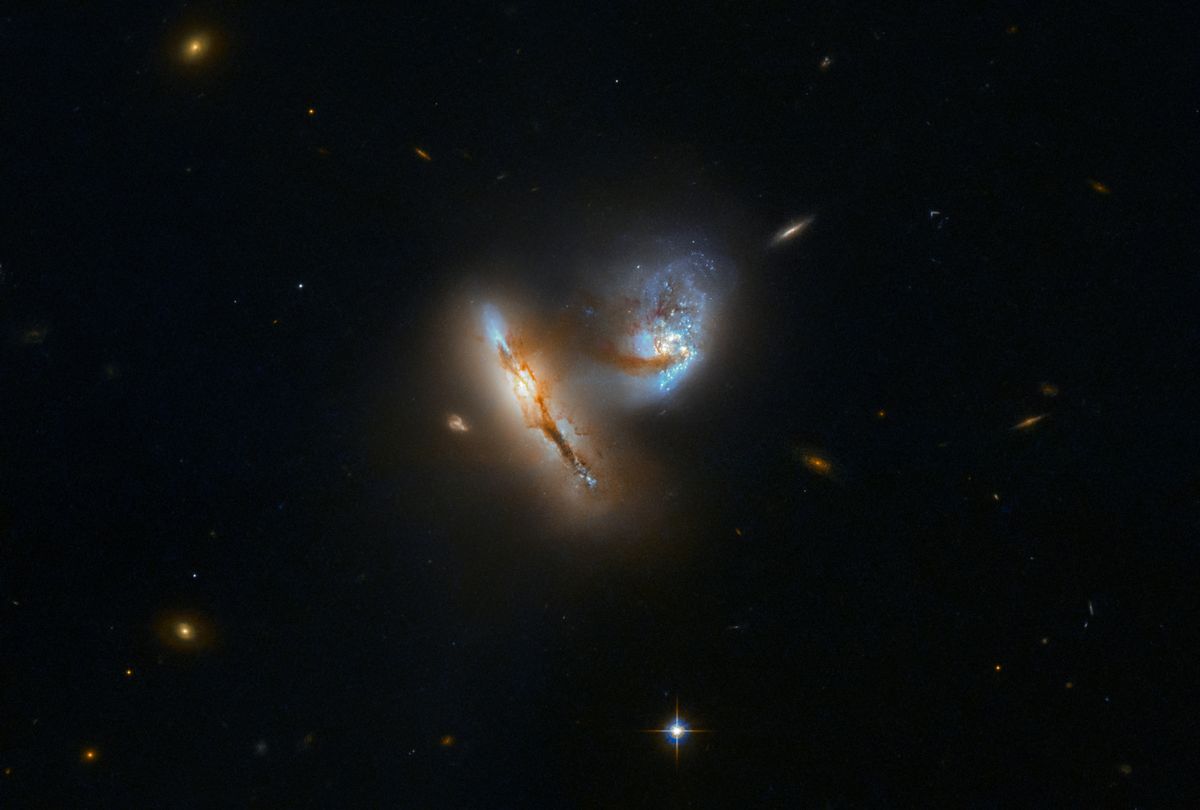
A stunning new Hubble Space Telescope image depicts three galaxies colliding and merging. While galactic collisions are fairly common, this one is unusual because each of the three galaxies is currently producing new stars. The three galaxies visible in the Boötes constellation will eventually merge to form a single large galaxy. The spiral structure that the galaxies now have will be wiped out as a result of gravitational interactions between the three.
The galaxies’ shapes are already distorted, and strands of gas and dust can be seen connecting them
The image depicts three galaxies, known collectively as SDSSCGB 10189, that appear to be merging. The galaxies’ shapes are already distorted, and strands of gas and dust can be seen connecting them. The three galaxies are emitting a great deal of light.
As the collision occurs, an unconnected spiral galaxy to the left sits serenely, almost like the cosmic equivalent of a bystander “rubbernecking” a more mundane collision taking place on our planet’s highway. The three large star-forming galaxies within SDSSCGB 10189 are only 50,000 light-years apart. While this may appear to be a large distance with little risk of collision, it is actually quite close in cosmic terms. The nearest galaxy to our own Milky Way, for example, is over 2.5 million light-years away from the sun.
The new Hubble Space Telescope image is part of an investigation
The new Hubble Space Telescope image is part of an investigation into the origins of the universe’s largest and most massive galaxies, known as Brightest Cluster Galaxies (BCGs). When a large galaxy swallows smaller galaxies or when gas-rich galaxies collide and merge, BCGs form. These cluster galaxies can be used to trace the formation of galactic clusters, which are massive cosmic structures made up of hundreds or thousands of galaxies. Scientists also hope that BCGs will shed light on the evolution of the so-called “cosmic web,” a tangled structure of dark matter-formed clumps and filaments that connect individual galaxies within a cluster.
BCGs are still the subject of debate as to when they formed in the universe’s 13.8 billion-year history. Some astronomers believe that these massive bright galaxies formed during an early epoch of the universe when it was only about 19% the age it is now. Others believe that BCGs are still forming and evolving. The merger of SDSSCGB 10189 may result in the formation of a BCG, shedding light on the mystery of how and when these massive bright galaxies form.





